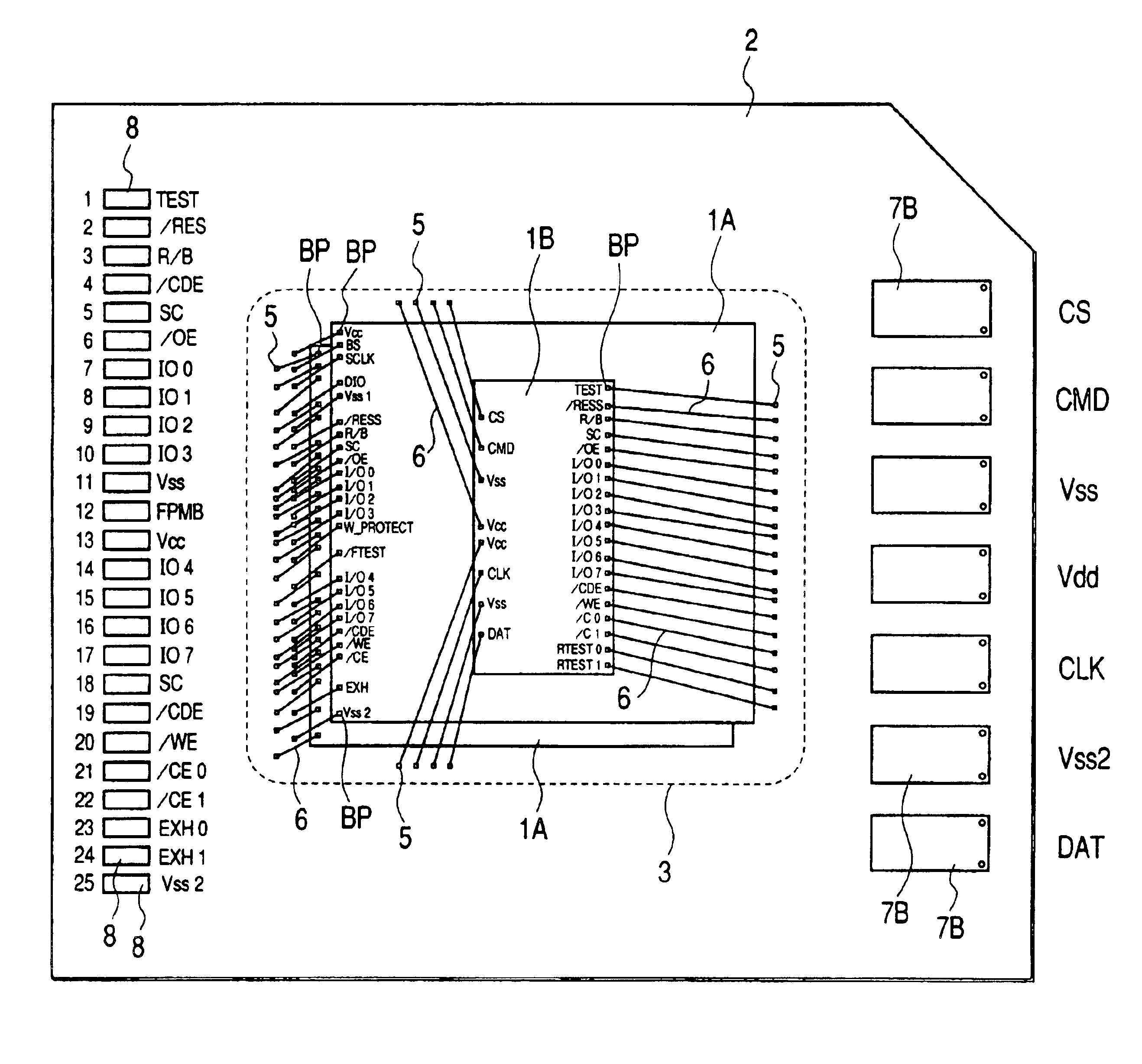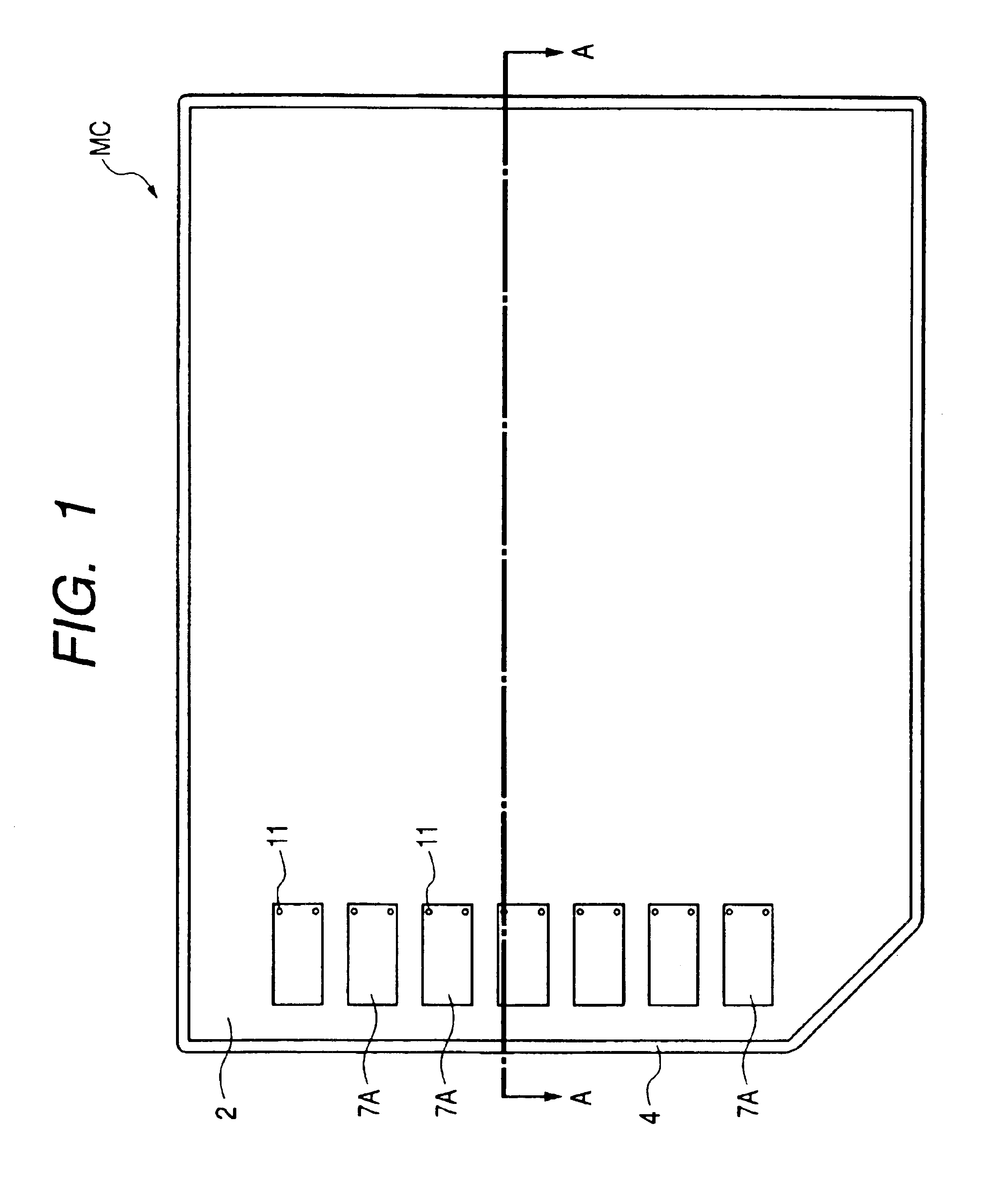Semiconductor device and a method of manufacturing the same
a technology of semiconductors and devices, applied in semiconductor/solid-state device testing/measurement, instruments, nanoinformatics, etc., can solve the problems of difficult to detect the existence of short circuit between the wires, and difficult to reduce the thickness of the package, so as to reduce the distance between the wire and the wire directly, the effect of increasing the loop height of the wir
- Summary
- Abstract
- Description
- Claims
- Application Information
AI Technical Summary
Benefits of technology
Problems solved by technology
Method used
Image
Examples
embodiment 1
[0040](Embodiment 1)
[0041]FIG. 1 is a plan view illustrating the outer appearance of the semiconductor device according to this Embodiment; FIG. 2 is a cross-sectional view taken along the longitudinal direction (a line A—A) of this semiconductor device; and FIG. 3 is a plan view illustrating the base substrate of this semiconductor device.
[0042]The semiconductor device according to this Embodiment is a memory card MC which is obtained by mounting, over a base substrate 2, two semiconductor chips (which will hereinafter be called chips or memory chips) 1A having, over the main surface thereof, a flash memory formed as a semiconductor element and a semiconductor chip (which will hereinafter be called a chip or control chip) 1B having a control circuit for the flash memory formed thereon; sealing these three chips 1A, 1A and 1B with a resin 3; and then, covering the upper surface of the base substrate 2 with a resin-made cap 4. This memory card MC is used for storing data, such as ima...
embodiment 2
[0061](Embodiment 2)
[0062]FIG. 13 is a cross-sectional view illustrating the semiconductor device of this Embodiment, while FIG. 14 is a plan view illustrating the base substrate of this semiconductor device.
[0063]The semiconductor device of this Embodiment is a memory card MC obtained by mounting over a base substrate 2 four memory chips 1A1 to 1A4, each having a flash memory formed thereon, and a control chip 1B; sealing these chips 1A1 to 1A4 and 1B with a resin 3; and covering the upper surface of the base substrate 2 with a resin cap 4.
[0064]The four memory chips 1A1 to 1A4 have the same external size and have a flash memory of the same memory capacity formed thereon. These memory chips 1A1 to 1A4 each have a single-side pad system wherein bonding pads BP are formed at the periphery of the element surface, and they are arranged in a line along one of the sides of each of the memory chips.
[0065]In this Embodiment, these four memory chips 1A1 to 1A4 are mounted over the base subs...
PUM
 Login to View More
Login to View More Abstract
Description
Claims
Application Information
 Login to View More
Login to View More - R&D
- Intellectual Property
- Life Sciences
- Materials
- Tech Scout
- Unparalleled Data Quality
- Higher Quality Content
- 60% Fewer Hallucinations
Browse by: Latest US Patents, China's latest patents, Technical Efficacy Thesaurus, Application Domain, Technology Topic, Popular Technical Reports.
© 2025 PatSnap. All rights reserved.Legal|Privacy policy|Modern Slavery Act Transparency Statement|Sitemap|About US| Contact US: help@patsnap.com



